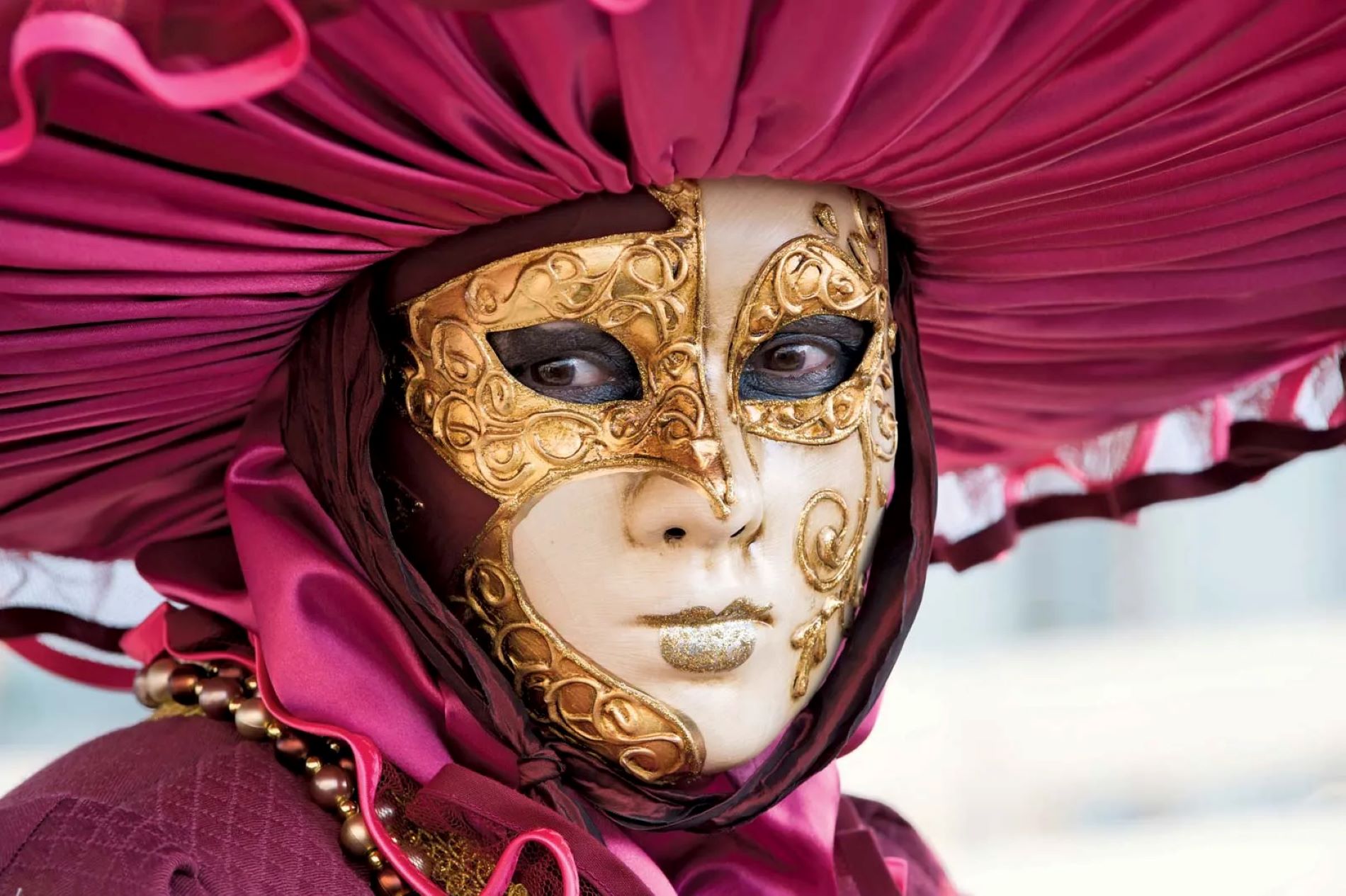
Masks have become an essential part of our daily lives, especially in recent times. The global pandemic has highlighted their significance in preventing the spread of viruses and protecting ourselves and others. However, masks have a history that goes beyond just health precautions. From traditional rituals to fashion statements, masks have played various roles in different cultures across the world.
In this article, we will explore 18 fascinating facts about masks that you may not be aware of. From ancient civilizations to modern-day trends, we will uncover interesting tidbits about the significance, symbolism, and uses of masks. So, get ready to don your imaginary mask and embark on a journey through time to discover the intriguing world of masks.
Key Takeaways:
- Masks have a rich history and cultural significance, used for storytelling, protection, and artistic expression. They connect us to our past and present cultures in fascinating ways.
- From ancient rituals to modern fashion trends, masks have captivated people worldwide. They symbolize our shared humanity and the diverse ways we express ourselves and connect with our world.
The history of masks dates back thousands of years.
Masks have been used by cultures all over the world for various purposes, including religious ceremonies, theatrical performances, and even as protective gear. The oldest known mask, dating back to 7000 BC, was discovered in Israel.
There are different types of masks.
From traditional ceremonial masks to medical masks, there are a wide variety of mask types. Some masks are designed to cover the entire face, while others only cover specific parts, such as the mouth and nose.
Masks have cultural significance.
In many cultures, masks hold profound cultural and spiritual significance. They can represent ancestral spirits, gods, or mythical creatures. Masks are often used in ceremonies and festivals to connect with the spiritual world.
Masks can be made from various materials.
Throughout history, masks have been crafted from a range of materials, including wood, clay, metal, leather, and even plant fibers. The choice of material often depends on the purpose and cultural traditions associated with the mask.
Masks have been used for disguise and protection.
Historically, masks have been worn to hide identities, such as in masquerade balls or during performances. They have also been used as protective gear, particularly in certain professions like healthcare and firefighting.
The use of masks is not limited to humans.
Animals, such as birds and mammals, also use masks in various ways. For example, some species have markings on their faces that resemble masks, which can serve as a form of camouflage or a way to communicate.
Masks can evoke different emotions.
The design and symbolism of a mask can convey a wide range of emotions, from joy and celebration to fear and mystery. Masks used in theatrical performances often amplify the expressions of the actors and connect with the audience on an emotional level.
Masks have been used in healing rituals.
In certain cultures, masks are believed to possess healing powers. They are used in rituals and ceremonies to promote physical and spiritual well-being, often associated with shamanism or traditional medicine practices.
Masks have been featured in art throughout history.
Artists have been incorporating masks into their works for centuries. From ancient cave paintings to modern-day sculptures, masks have been depicted in various art forms, showcasing their cultural significance and aesthetic appeal.
Masks have been used for storytelling.
In many cultures, masks are used as a storytelling tool. They can represent characters and help bring myths, legends, and folktales to life during performances and traditional storytelling sessions.
Masks play a role in religious rituals.
In religious ceremonies and rituals, masks often symbolize spiritual beings or represent transformation and transcendence. They are used to connect with the divine and facilitate a deeper spiritual experience.
Masks have been used for protection against diseases.
Throughout history, masks have been used as a form of protection against contagious diseases. In the modern world, masks became even more prevalent during the COVID-19 pandemic, helping to prevent the spread of the virus.
Some masks are believed to possess supernatural powers.
In certain cultures, masks are believed to be imbued with supernatural powers. They are considered sacred objects and are treated with great respect and reverence.
Masks have influenced fashion trends.
The intricate designs and cultural symbolism of masks have often inspired fashion designers. From runway shows to costume parties, masks have had a significant impact on fashion trends throughout history.
The world’s largest mask collection is located in the United Kingdom.
The Mask Museum in the UK houses over 9,000 masks from various cultures around the world. It is a treasure trove for enthusiasts and researchers eager to explore the rich history and diversity of masks.
Masks have been used in traditional dance performances.
In many traditional dance forms, masks play a vital role in storytelling and character portrayal. They add visual appeal and aid in the expression of the dancer’s emotions and movements.
Masks have been used in psychological therapy.
In certain forms of therapy, masks are used as a tool for self-expression and exploration of emotions. They provide a safe and creative outlet for individuals to delve into their inner world.
Masks have become iconic symbols in popular culture.
From the iconic mask worn by the superhero Batman to the intriguing Venetian masks associated with masquerade balls, masks have become popular symbols in movies, literature, and other forms of entertainment.
Conclusion
In conclusion, masks have become an essential part of our lives in recent times. They not only protect us from airborne particles and infectious diseases, but they also serve as a fashion statement. Masks come in various styles, colors, and materials, catering to individual preferences and needs. It is important to wear masks properly, covering both the nose and mouth, and to follow recommended guidelines for their usage.
FAQs
Q: Are masks effective in preventing the spread of diseases?
A: Yes, masks are effective in reducing the transmission of contagious diseases, especially when combined with other preventive measures like regular hand washing and social distancing.
Q: Can I reuse disposable masks?
A: Disposable masks are designed for single-use only and should be properly disposed of after each use. Reusing disposable masks can compromise their effectiveness and increase the risk of contamination.
Q: How often should I wash reusable cloth masks?
A: It is recommended to wash reusable cloth masks after each use. Regular washing with soap and water or in a washing machine helps remove any particles or germs trapped in the fabric.
Q: Can I wear a mask while exercising?
A: It is generally safe to wear a mask while exercising, but it may feel more challenging to breathe. If you experience discomfort or difficulty breathing, it is advisable to modify your activity level or find a less crowded area to exercise.
Q: Do I still need to wear a mask if I am vaccinated?
A: The recommendations for vaccinated individuals may vary depending on the current situation and guidelines provided by health authorities. It is important to stay updated with the latest information and follow the advice of health professionals.
Masks have captivated humans for millennia, serving various purposes across cultures. Whether you're interested in enhancing your workout with training masks, protecting your little ones with kid-friendly face coverings, or exploring the iconic green-faced character from a beloved film, there's more to discover about these fascinating facial accessories. Keep reading to uncover additional mask-related topics that will pique your curiosity and expand your knowledge.
Was this page helpful?
Our commitment to delivering trustworthy and engaging content is at the heart of what we do. Each fact on our site is contributed by real users like you, bringing a wealth of diverse insights and information. To ensure the highest standards of accuracy and reliability, our dedicated editors meticulously review each submission. This process guarantees that the facts we share are not only fascinating but also credible. Trust in our commitment to quality and authenticity as you explore and learn with us.


